Z-claudius24
Banned
Hi,
Bristol F2B Mk.1 from Robert Bruce
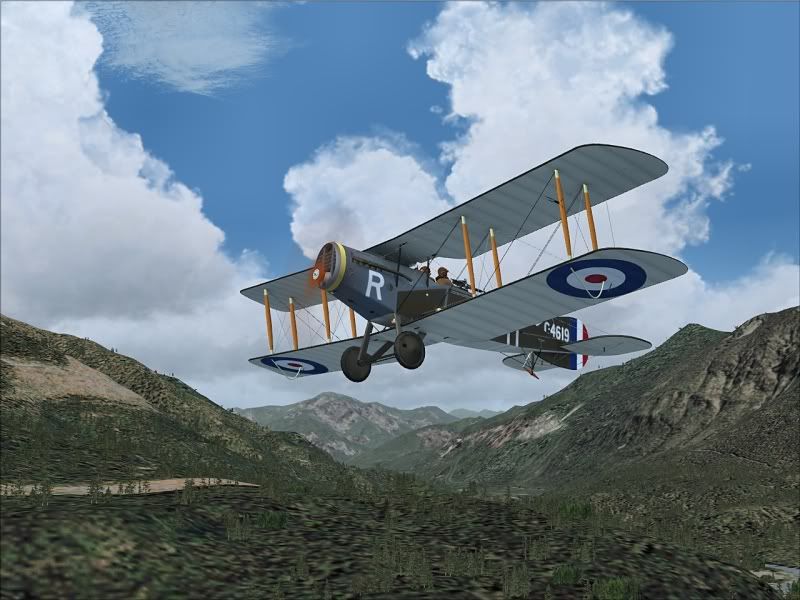
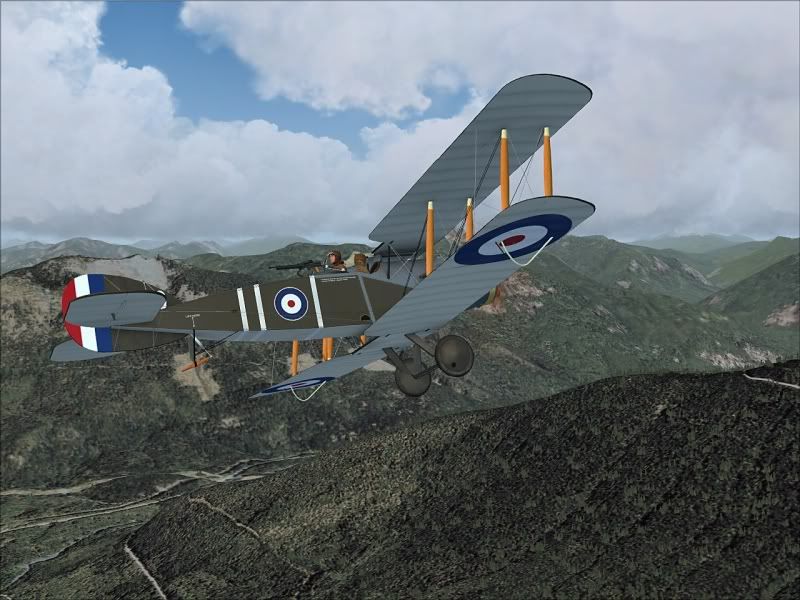
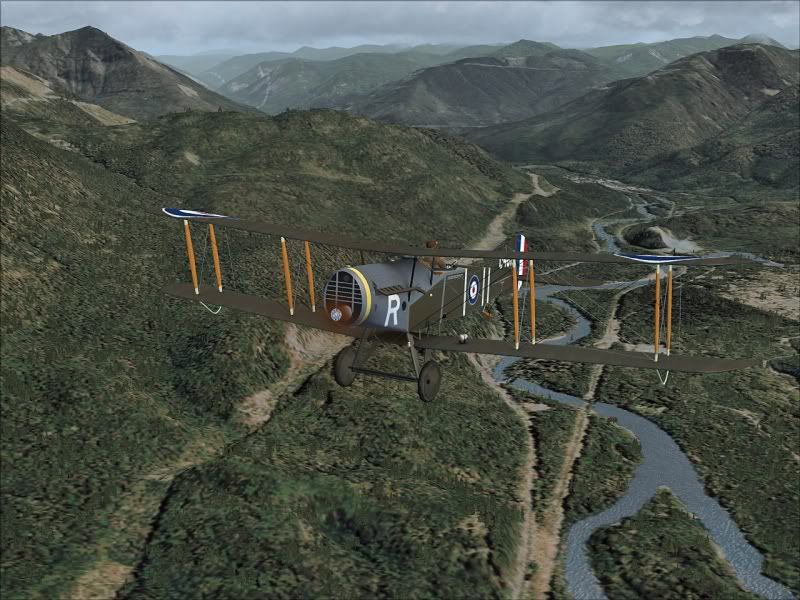
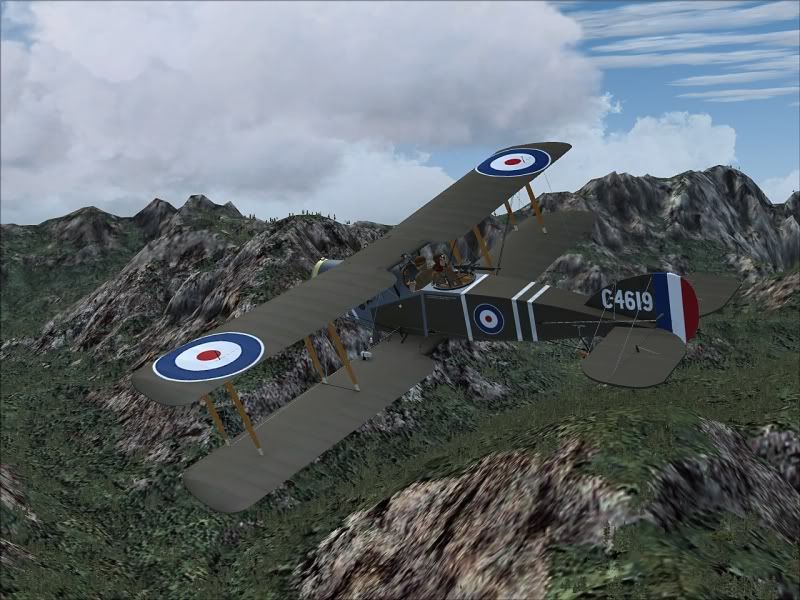
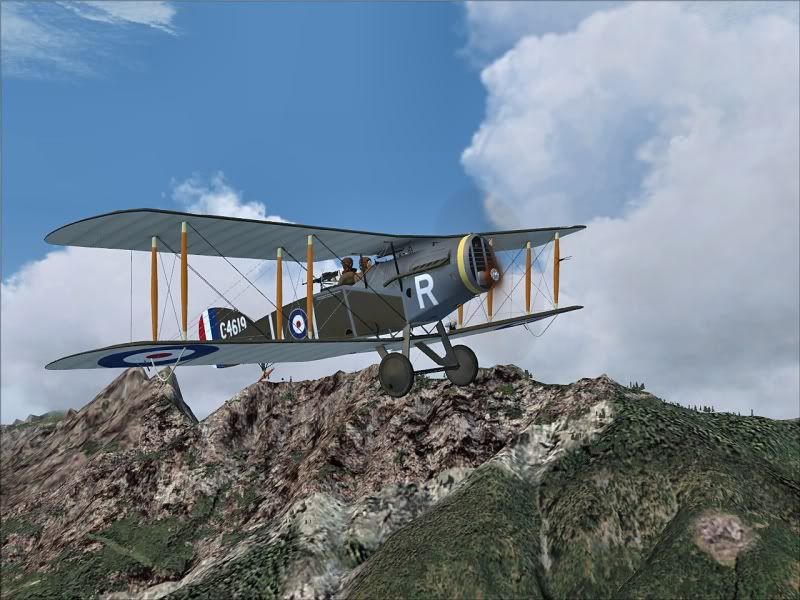
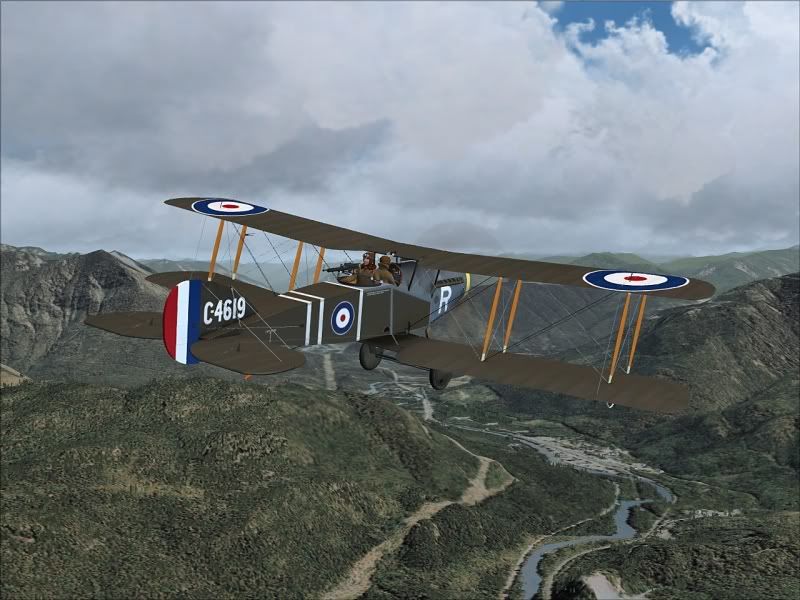
Bristol F2B Mk.1 from Robert Bruce












[fltsim.0]
title = Bristol F2B
sim = bristol_f2b_fs9
model =
panel =
sound =
texture =C4800
panel_alias =
sound_alias =
kb_checklists =Bristol_F2B_check
kb_reference =Bristol_F2B_ref
atc_id =
atc_id_color =
atc_parking_types =
atc_parking_code =
atc_airline=
atc_flight_number=
ui_manufacturer =BRISTOL
ui_type = F2B Mk.1 'Biff'
prop_anim_ratio=1.025
ui_variation = C4800 of No. 48 Sqdn RFC/RAF
description="Bristol Fighter F.2b Mk.1 'Biff' - Designed in 1916 and entering service in 1917 The Bristol F.2B or Bristol Fighter, had a somewhat inauspicious combat debut when flying with No. 48 Squadron in Flanders. This quickly changed as crews learned to fly the Bristol Fighter as they would a single seat fighter. When flown in this manner the Bristol Fighter became one of the British success stories of the WW1 ranking along side the Sopwith Camel and RAF SE5a. The Bristol was a true multi-role aicraft and was flown in the fighter, fighter reconnaissance, ground attack, night fighter and artillery spotting roles. It has been likened to the Mosquito of WW1. In WW1 the Bristol Fighter was nicknamed 'Biff' by its crews. Post WW1 the Bristol Fighter was nicknamed the 'Brisfit', short for Bristol misfit. The Brisfit served with the RAF until 1932 in army co-operation and training roles. Post WW1 the Bristol Fighter served with a number of other air forces including Poland, New Zealand, Spain, Belgium, Mexico & Greece. - "
visual_damage = 0
[fltsim.1]
title = Bristol F2B C4619
sim = bristol_f2b_fs9
model =
panel =
sound =
texture =C4619
panel_alias =
sound_alias =
kb_checklists =Bristol_F2B_check
kb_reference =Bristol_F2B_ref
atc_id =
atc_id_color =
atc_parking_types =
atc_parking_code =
atc_airline=
atc_flight_number=
ui_manufacturer =BRISTOL
ui_type = F2B Mk.1 'Biff'
prop_anim_ratio=1.025
ui_variation = "C4619 No.62 Squadron RFC/RAF 'R' 1918."
description = "Bristol Fighter F.2b Mk.1 'Biff' - Designed in 1916 and entering service in 1917 The Bristol F.2B or Bristol Fighter, had a somewhat inauspicious combat debut when flying with No. 48 Squadron in Flanders. This quickly changed as crews learned to fly the Bristol Fighter as they would a single seat fighter. When flown in this manner the Bristol Fighter became one of the British success stories of the WW1 ranking along side the Sopwith Camel and RAF SE5a. The Bristol was a true multi-role aicraft and was flown in the fighter, fighter reconnaissance, ground attack, night fighter and artillery spotting roles. It has been likened to the Mosquito of WW1. In WW1 the Bristol Fighter was nicknamed 'Biff' by its crews. Post WW1 the Bristol Fighter was nicknamed the 'Brisfit', short for Bristol misfit. The Brisfit served with the RAF until 1932 in army co-operation and training roles. Post WW1 the Bristol Fighter served with a number of other air forces including Poland, New Zealand, Spain, Belgium, Mexico & Greece. - This particular aircraft C4619, flown by 2/Lt WE Staton & Lt HE Merritt shot down a Fokker Dr.1 and an Albatros Scout on March 13 1918."
visual_damage = 0
[fltsim.2]
title = Bristol F2B BR401
sim = bristol_f2b_fs9
model =
panel =
sound =
texture =BR401
panel_alias =
sound_alias =
kb_checklists =Bristol_F2B_check
kb_reference =Bristol_F2B_ref
atc_id =
atc_id_color =
atc_parking_types =
atc_parking_code =
atc_airline=
atc_flight_number=
ui_createdby="Robert Bruce"
ui_manufacturer =BRISTOL
ui_type = F2B Mk.1 'Biff'
prop_anim_ratio=1.025
ui_typerole="WW1 2 Seat Fighter"
ui_variation = "BR401 - Luchtvaart Adfeling"
description = "Bristol Fighter F.2b Mk.1 'Biff' - Designed in 1916 and entering service in 1917 The Bristol F.2B or Bristol Fighter, had a somewhat inauspicious combat debut when flying with No. 48 Squadron in Flanders. This quickly changed as crews learned to fly the Bristol Fighter as they would a single seat fighter. When flown in this manner the Bristol Fighter became one of the British success stories of the WW1 ranking along side the Sopwith Camel and RAF SE5a. The Bristol was a true multi-role aicraft and was flown in the fighter, fighter reconnaissance, ground attack, night fighter and artillery spotting roles. It has been likened to the Mosquito of WW1. In WW1 the Bristol Fighter was nicknamed 'Biff' by its crews. Post WW1 the Bristol Fighter was nicknamed the 'Brisfit', short for Bristol misfit. The Brisfit served with the RAF until 1932 in army co-operation and training roles. Post WW1 the Bristol Fighter served with a number of other air forces including Poland, New Zealand, Spain, Belgium, Mexico & Greece."
visual_damage = 0
[fltsim.3]
title = Bristol F2B E2459
sim = bristol_f2b_fs9
model =2p_lh
panel =
sound =
texture =E2459
panel_alias =
sound_alias =
kb_checklists =Bristol_F2B_check
kb_reference =Bristol_F2B_ref
atc_id =
atc_id_color =
atc_parking_types =
atc_parking_code =
atc_airline=
atc_flight_number=
ui_manufacturer =BRISTOL
ui_type = F2B Mk.1 'Biff'
prop_anim_ratio=1.025
ui_variation = "E2459 No. 88 Sqdn RAF/RFC."
description = "Bristol Fighter F.2b Mk.1 'Biff' - Designed in 1916 and entering service in 1917 The Bristol F.2B or Bristol Fighter, had a somewhat inauspicious combat debut when flying with No. 48 Squadron in Flanders. This quickly changed as crews learned to fly the Bristol Fighter as they would a single seat fighter. When flown in this manner the Bristol Fighter became one of the British success stories of the WW1 ranking along side the Sopwith Camel and RAF SE5a. The Bristol was a true multi-role aicraft and was flown in the fighter, fighter reconnaissance, ground attack, night fighter and artillery spotting roles. It has been likened to the Mosquito of WW1. In WW1 the Bristol Fighter was nicknamed 'Biff' by its crews. Post WW1 the Bristol Fighter was nicknamed the 'Brisfit', short for Bristol misfit. The Brisfit served with the RAF until 1932 in army co-operation and training roles. Post WW1 the Bristol Fighter served with a number of other air forces including Poland, New Zealand, Spain, Belgium, Mexico & Greece."
visual_damage = 0
[fltsim.4]
title = Bristol F2B E2601
sim = bristol_f2b_fs9
model =2p_ld
panel =
sound =
texture =E2601
panel_alias =
sound_alias =
kb_checklists =Bristol_F2B_check
kb_reference =Bristol_F2B_ref
atc_id =
atc_id_color =
atc_parking_types =
atc_parking_code =
atc_airline=
atc_flight_number=
ui_manufacturer =BRISTOL
ui_type = F2B Mk.1 'Biff'
prop_anim_ratio=1.025
ui_variation = E2601 No. 22 Sqdn. RAF
description = "Bristol Fighter F.2b Mk.1 'Biff' - Designed in 1916 and entering service in 1917 The Bristol F.2B or Bristol Fighter, had a somewhat inauspicious combat debut when flying with No. 48 Squadron in Flanders. This quickly changed as crews learned to fly the Bristol Fighter as they would a single seat fighter. When flown in this manner the Bristol Fighter became one of the British success stories of the WW1 ranking along side the Sopwith Camel and RAF SE5a. The Bristol was a true multi-role aicraft and was flown in the fighter, fighter reconnaissance, ground attack, night fighter and artillery spotting roles. It has been likened to the Mosquito of WW1. In WW1 the Bristol Fighter was nicknamed 'Biff' by its crews. Post WW1 the Bristol Fighter was nicknamed the 'Brisfit', short for Bristol misfit. The Brisfit served with the RAF until 1932 in army co-operation and training roles. Post WW1 the Bristol Fighter served with a number of other air forces including Poland, New Zealand, Spain, Belgium, Mexico & Greece."
visual_damage = 0
[fltsim.5]
title = Bristol F2B F4306
sim = bristol_f2b_fs9
model =2p_ld
panel =
sound =
texture =F4306
panel_alias =
sound_alias =
kb_checklists =Bristol_F2B_check
kb_reference =Bristol_F2B_ref
atc_id =
atc_id_color =
atc_parking_types =
atc_parking_code =
atc_airline=
atc_flight_number=
ui_manufacturer =BRISTOL
ui_type = F2B Mk.1 'Biff'
prop_anim_ratio=1.025
ui_variation = F4306 'Burgate' - 'L' Flight - Long Range Artillery Spotting Flight.
description = "Bristol Fighter F.2b Mk.1 'Biff' - Designed in 1916 and entering service in 1917 The Bristol F.2B or Bristol Fighter, had a somewhat inauspicious combat debut when flying with No. 48 Squadron in Flanders. This quickly changed as crews learned to fly the Bristol Fighter as they would a single seat fighter. When flown in this manner the Bristol Fighter became one of the British success stories of the WW1 ranking along side the Sopwith Camel and RAF SE5a. The Bristol was a true multi-role aicraft and was flown in the fighter, fighter reconnaissance, ground attack, night fighter and artillery spotting roles. It has been likened to the Mosquito of WW1. In WW1 the Bristol Fighter was nicknamed 'Biff' by its crews. Post WW1 the Bristol Fighter was nicknamed the 'Brisfit', short for Bristol misfit. The Brisfit served with the RAF until 1932 in army co-operation and training roles. Post WW1 the Bristol Fighter served with a number of other air forces including Poland, New Zealand, Spain, Belgium, Mexico & Greece."
visual_damage = 0
[fltsim.6]
title = Bristol F2B E2529
sim = bristol_f2b_fs9
model =2p_ld
panel =
sound =
texture =E2529
panel_alias =
sound_alias =
kb_checklists =Bristol_F2B_check
kb_reference =Bristol_F2B_ref
atc_id =
atc_id_color =
atc_parking_types =
atc_parking_code =
atc_airline=
atc_flight_number=
ui_manufacturer =BRISTOL
ui_type = F2B Mk.1 'Biff'
prop_anim_ratio=1.025
ui_variation = "E2529 'O' Flight No. 69 RFC/ No. 3 AFC"
description = "Bristol Fighter F.2b Mk.1 'Biff' - Designed in 1916 and entering service in 1917 The Bristol F.2B or Bristol Fighter, had a somewhat inauspicious combat debut when flying with No. 48 Squadron in Flanders. This quickly changed as crews learned to fly the Bristol Fighter as they would a single seat fighter. When flown in this manner the Bristol Fighter became one of the British success stories of the WW1 ranking along side the Sopwith Camel and RAF SE5a. The Bristol was a true multi-role aicraft and was flown in the fighter, fighter reconnaissance, ground attack, night fighter and artillery spotting roles. It has been likened to the Mosquito of WW1. In WW1 the Bristol Fighter was nicknamed 'Biff' by its crews. Post WW1 the Bristol Fighter was nicknamed the 'Brisfit', short for Bristol misfit. The Brisfit served with the RAF until 1932 in army co-operation and training roles. Post WW1 the Bristol Fighter served with a number of other air forces including Poland, New Zealand, Spain, Belgium, Mexico & Greece."
visual_damage = 0
[fltsim.7]
title = Bristol F2B F4337
sim = bristol_f2b_fs9
model =2p_ld
panel =
sound =
texture =F4337
panel_alias =
sound_alias =
kb_checklists =Bristol_F2B_check
kb_reference =Bristol_F2B_ref
atc_id =
atc_id_color =
atc_parking_types =
atc_parking_code =
atc_airline=
atc_flight_number=
ui_manufacturer =BRISTOL
ui_type = F2B Mk.1 'Biff'
prop_anim_ratio=1.025
ui_variation = "F4337 probably 48 Sqdn RAF, Fienvilliers 1919."
description = "Bristol Fighter F.2b Mk.1 'Biff' - Designed in 1916 and entering service in 1917 The Bristol F.2B or Bristol Fighter, had a somewhat inauspicious combat debut when flying with No. 48 Squadron in Flanders. This quickly changed as crews learned to fly the Bristol Fighter as they would a single seat fighter. When flown in this manner the Bristol Fighter became one of the British success stories of the WW1 ranking along side the Sopwith Camel and RAF SE5a. The Bristol was a true multi-role aicraft and was flown in the fighter, fighter reconnaissance, ground attack, night fighter and artillery spotting roles. It has been likened to the Mosquito of WW1. In WW1 the Bristol Fighter was nicknamed 'Biff' by its crews. Post WW1 the Bristol Fighter was nicknamed the 'Brisfit', short for Bristol misfit. The Brisfit served with the RAF until 1932 in army co-operation and training roles. Post WW1 the Bristol Fighter served with a number of other air forces including Poland, New Zealand, Spain, Belgium, Mexico & Greece."
visual_damage = 0
[fltsim.8]
title = Bristol F2B D8084
sim = bristol_f2b_4p_fs9
model =1
panel =
sound =
texture =D8084
panel_alias =
sound_alias =
kb_checklists =Bristol_F2B_check
kb_reference =Bristol_F2B_ref
atc_id =
atc_id_color =
atc_parking_types =
atc_parking_code =
atc_airline=
atc_flight_number=
ui_createdby="Robert Bruce"
ui_manufacturer =BRISTOL
ui_type = F2B Mk.1 'Biff'
prop_anim_ratio=1.025
ui_typerole="WW1 2 Seat Fighter"
ui_variation = "D8084 No.139 Sqdn RAF, Italy 1918."
description = "Bristol Fighter F.2b Mk.1 'Biff' - Designed in 1916 and entering service in 1917 The Bristol F.2B or Bristol Fighter, had a somewhat inauspicious combat debut when flying with No. 48 Squadron in Flanders. This quickly changed as crews learned to fly the Bristol Fighter as they would a single seat fighter. When flown in this manner the Bristol Fighter became one of the British success stories of the WW1 ranking along side the Sopwith Camel and RAF SE5a. The Bristol was a true multi-role aicraft and was flown in the fighter, fighter reconnaissance, ground attack, night fighter and artillery spotting roles. It has been likened to the Mosquito of WW1. In WW1 the Bristol Fighter was nicknamed 'Biff' by its crews. Post WW1 the Bristol Fighter was nicknamed the 'Brisfit', short for Bristol misfit. The Brisfit served with the RAF until 1932 in army co-operation and training roles. Post WW1 the Bristol Fighter served with a number of other air forces including Poland, New Zealand, Spain, Belgium, Mexico & Greece."
visual_damage = 0
[fltsim.9]
title = Bristol F2B B1112
sim = bristol_f2b_4p_fs9
model =1
panel =
sound =
texture =B1112
panel_alias =
sound_alias =
kb_checklists =Bristol_F2B_check
kb_reference =Bristol_F2B_ref
atc_id =
atc_id_color =
atc_parking_types =
atc_parking_code =
atc_airline=
atc_flight_number=
ui_createdby="Robert Bruce"
ui_manufacturer =BRISTOL
ui_type = F2B Mk.1 'Biff'
prop_anim_ratio=1.025
ui_typerole="WW1 2 Seat Fighter"
ui_variation = "B1112 No. 22 Sqdn RFC/RAF."
description = "Bristol Fighter F.2b Mk.1 'Biff' - Designed in 1916 and entering service in 1917 The Bristol F.2B or Bristol Fighter, had a somewhat inauspicious combat debut when flying with No. 48 Squadron in Flanders. This quickly changed as crews learned to fly the Bristol Fighter as they would a single seat fighter. When flown in this manner the Bristol Fighter became one of the British success stories of the WW1 ranking along side the Sopwith Camel and RAF SE5a. The Bristol was a true multi-role aicraft and was flown in the fighter, fighter reconnaissance, ground attack, night fighter and artillery spotting roles. It has been likened to the Mosquito of WW1. In WW1 the Bristol Fighter was nicknamed 'Biff' by its crews. Post WW1 the Bristol Fighter was nicknamed the 'Brisfit', short for Bristol misfit. The Brisfit served with the RAF until 1932 in army co-operation and training roles. Post WW1 the Bristol Fighter served with a number of other air forces including Poland, New Zealand, Spain, Belgium, Mexico & Greece."
visual_damage = 0
that may help locate it.
Didn't realise that Mr Bruce had ever released a version for FS9, I only ever saw the FS X and CFS 3 versions; if anybody does know of a genuine FS9 version, and can point me in the right direction, I'd be eternally grateful. :salute:

